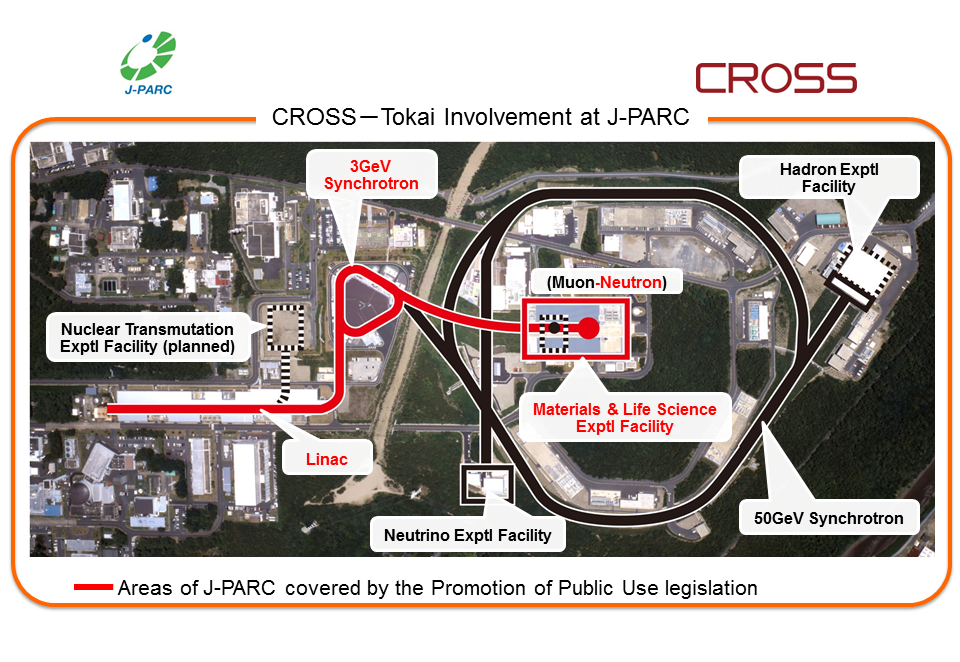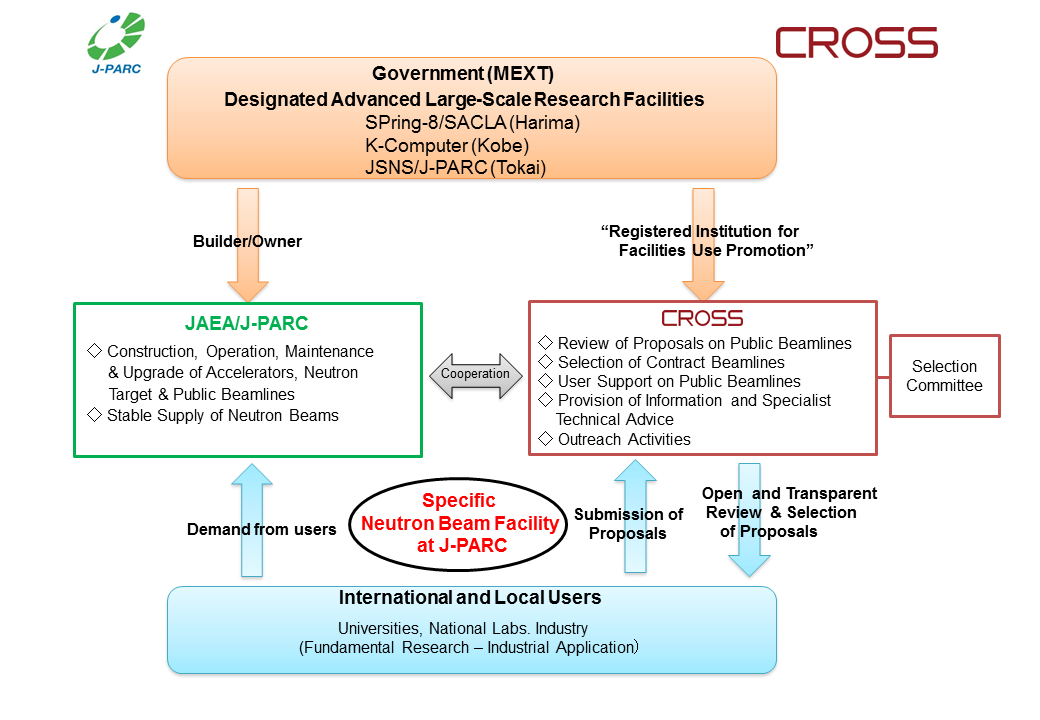J-PARC and CROSS
J-PARC was jointly constructed and is now operated by The Japan Atomic Energy Agency (JAEA) and the High Energy Accelerator Research Organization (KEK). It is comprised of a suite of world-class proton accelerators and experimental facilities that make use of the intense proton beams. At the center of these is the Materials and Life Science Experimental Facility (MLF) – one of the world’s leading centers for spallation neutron and muon beam based research.
Consistent with its longstanding policy of promoting open access to major publicly-funded research facilities, in March 2011 the Japanese government appointed CROSS-Tokai to administer and support user operations on the neutron Public Beamlines at J-PARC MLF. This appointment brought the neutron Public Beamlines at J-PARC MLF into line with the SPring-8/SACLA synchrotron radiation and XFEL facility (Harima Science City, Hyogo) and the “K Computer” supercomputer facility (Kobe, Hyogo) where the “Public Use Promotion” legislation has already been successfully applied.
The aim of the legislation is to advance science and technology through the effective promotion and support of the general use of specific world-leading large-scale research facilities. In practice, this will be achieved by attracting and facilitating use by researchers from a wide range of fields that spans from fundamental and applied research to industrial applications.
Under the terms of the legislation governing the “Promotion of Public Utilization of Specific Advanced Large Research Facilities”, the accelerators (linac and 3 GeV proton synchrotron) and public beamlines of J-PARC that are used for the generation and experimental exploitation of neutrons were designated as a “Specific Neutron Beam Facility” in July 2009 (See Figure 1).

Figure 1 : The Specific Neutron Research Facility at J-PARC (Shown in red)
The legislation requires that at the “Specific Neutron Beam Facility”, an independent third-party organization (known as the “Registered Institution”) should manage and execute the activities associated with the selection of research proposals for, and the support of user experiments on the public beamlines in preference to the original builder and installer of these facilities (JAEA). Similarly, the role of the Registered Institution will include also activities associated with the selection and implementation of proposals to build beamlines put forward by other organizations.
CROSS-Tokai was selected by the Ministry for Education, Culture, Sports, Science and Technology (MEXT) as the “Registered Institution” for this purpose and formally appointed by the Minister on the 22nd of March, 2011. Accordingly, on the 1st of April, 2011, CROSS-Tokai assumed this role and began operations at its offices within the JAEA precinct (See Figure 2).

Figure 2 : The relationship between and functions of JAEA and CROSS-Tokai
Although the structure that has been put in place appears complicated, this model, as prescribed by ground-breaking legislation, has been successfully implemented at the SPring-8/SACLA synchrotron radiation facility in Hyogo Prefecture and the “K Computer” – a next generation supercomputer project based in Kobe.
These activities are collectively referred to as “Usage Promotion Services”.
